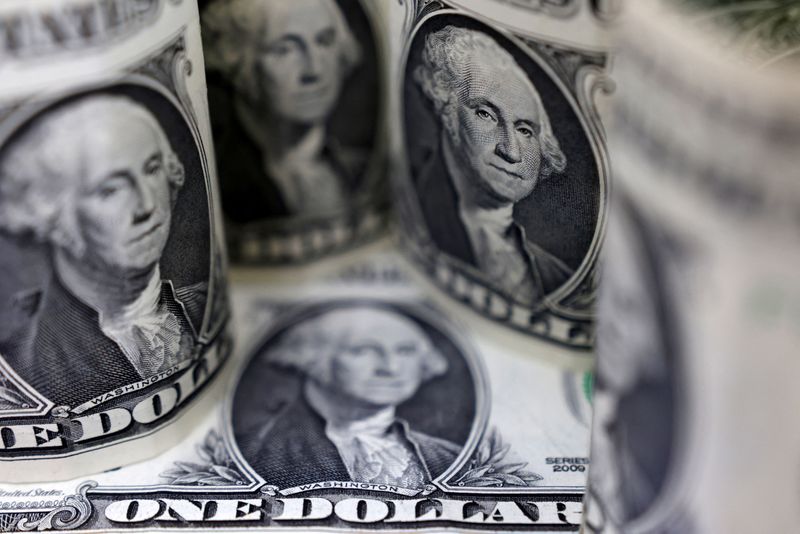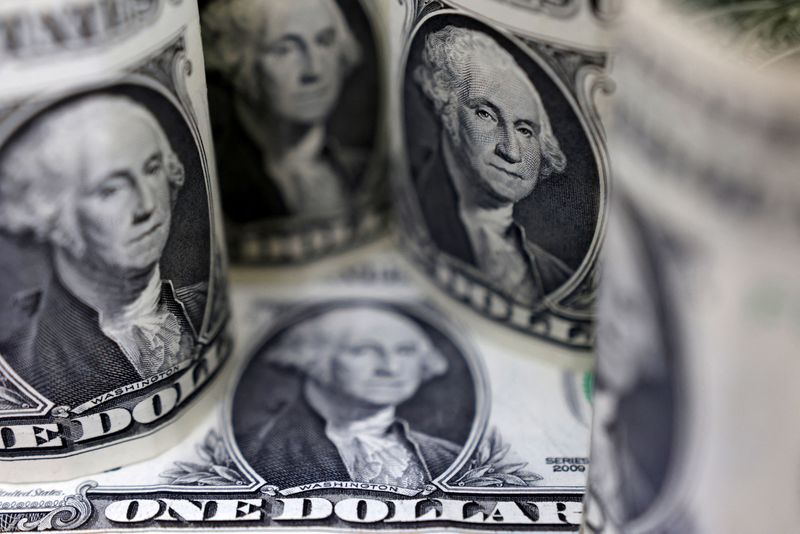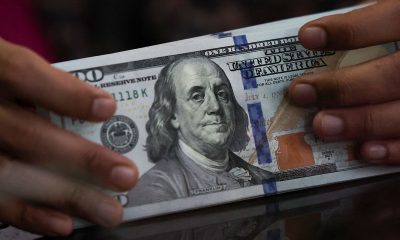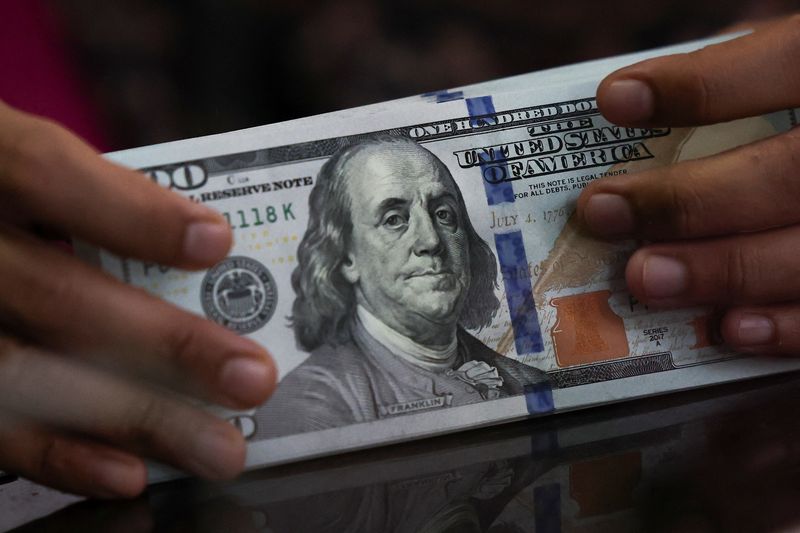Forex
How hedge funds view the fate of king dollar


© Reuters. FILE PHOTO: U.S. Dollar banknotes are seen in this illustration taken July 17, 2022. REUTERS/Dado Ruvic/Illustration
By Nell Mackenzie and Carolina Mandl
LONDON/NEW YORK (Reuters) – After making hay when a summer bond rout propelled the U.S. dollar to 10-month highs, hedge funds are now pondering what lies ahead for the greenback.
The dollar, down 3.5% in November against a basket of other major currencies, is set for its worst monthly performance in a year as expectations of interest-rate cuts next year grow, toppling Treasury yields from multi-year highs.
Five funds shared their views on the fate of the dollar. This does not represent recommendations or trading positions, which some hedge funds cannot reveal for regulatory reasons.
1/ AQR CAPITAL MANAGEMENT
* Systematic asset manager
* Size: $95 billion assets under management (AUM)
* Founded in 1998
* Key trade: Long dollar, short Swiss franc
Managing director Jonathan Fader believes that an end to U.S. rate hikes does not necessarily imply dollar weakness.
Over the last 40 years, the dollar has tended to average steady or a bit stronger in the months following a final hike, says Fader, who is “constructive” on the currency.
“In particular, growth trends in the U.S. look notably stronger than in most other major economies around the world,” he said.
Fader believes the best way to capitalise on ongoing dollar strength would be to buy the greenback against currencies exposed to negative price trends, weaker economic fundamentals and dovish monetary policy, such as the Swiss franc.
The Swiss franc is up around 5% against the dollar so far this year.
2/ FLORIN COURT CAPITAL
* Diversified systematic asset manager
* Size: $1.8 billion AUM
* Founded in 2016
* Key trade: Long Latin American emerging markets currencies/short dollar
Doug Greenig, Florin Court’s chief investment and executive officer, reckons the dollar will slowly decline as geopolitical tensions disperse power to different parts of the world.
He expects the U.S. economy to slow sharply which, alongside falling inflation, will likely hurt the dollar against some emerging market currencies.
“The year-on-year reduction in the U.S. broad money supply is huge. It’s even bigger when you factor in the inflation-adjusted money supply,” said Greenig, adding this would make it “very hard” to sustain growth. “This is the punch draining out of the punch bowl.”
Greenig noted that because many emerging market countries raised rates earlier and more aggressively than advanced economies, bond yields in countries such as Brazil, Colombia, Hungary and Poland look attractive.
3/ NWI MANAGEMENT LP * Global macro hedge fund * Size: $2.2 billion AUM * Founded in 1999 * Key trade: short offshore Chinese Yuan against a trade-weighted CFETS (China Foreign Exchange Trade System) basket of currencies
Tara Hariharan, managing director of global macro research at NWI, said the hedge fund is structuring its currency bets to limit the effect of swings in the dollar, as the resilience of the U.S. economy has made it difficult to call a peak for the greenback.
One of the trades she recommends involves China. Hariharan said yuan depreciation risks loom as China’s capital outflows rise, multinationals repatriate more earnings and the economy slows further.
“The yuan may be seasonally supported by Chinese New Year-related demand until late January but then may turn lower,” she said.
NWI also does not rule out a forced weakening of the yuan to improve China’s export competitiveness.
4/ GARDE ASSET
* Brazilian hedge fund, with global macro strategy
* Size: $300 million AUM
* Founded in 2013
* Key trade: Long Mexican peso
Garde CEO Carlos Calabresi favours Mexico’s currency because interest rates have been at an historic high of 11.25% since March and its balance of payments is in good shape.
He also believes the country will receive huge foreign investment from so-called “nearshoring” as manufacturing capacity is moved closer to the U.S. market from, for example, Asia.
These trends are likely to lead to a strengthening of the Mexican peso, which is up roughly 13% against the dollar this year.
5/ CIBC ASSET MANAGEMENT
* Canadian asset manager, with an active currency strategy
* Size: $145 billion AUM
* Founded more than 50 years ago
* Key trade: Long Brazilian real
Michael Sager, CIBC Asset Management’s head of multi-asset and currency management, believes the Brazilian real is likely to strengthen in the short term given a double-digit benchmark interest rate, currently 12.25%, that attracts foreign capital.
The Brazilian real, trading at 4.8908 per dollar, is up roughly 8% so far this year against the dollar.
Inflation, at around 5%, is also under control, as the Brazilian central bank was one of the first monetary authorities to begin hiking rates, said Sager.
Additionally, Latin America’s largest economy has strong exports and low debt levels compared to other major economies.
“If you put all of those pieces together, to us this is what a strong fundamental country and currency should look like,” he said.

 Forex3 years ago
Forex3 years agoForex Today: the dollar is gaining strength amid gloomy sentiment at the start of the Fed’s week

 Forex3 years ago
Forex3 years agoUnbiased review of Pocket Option broker

 Forex3 years ago
Forex3 years agoDollar to pound sterling exchange rate today: Pound plummeted to its lowest since 1985

 Forex3 years ago
Forex3 years agoHow is the Australian dollar doing today?

 Cryptocurrency3 years ago
Cryptocurrency3 years agoWhat happened in the crypto market – current events today

 World3 years ago
World3 years agoWhy are modern video games an art form?

 Commodities3 years ago
Commodities3 years agoCopper continues to fall in price on expectations of lower demand in China

 Economy3 years ago
Economy3 years agoCrude oil tankers double in price due to EU anti-Russian sanctions
























